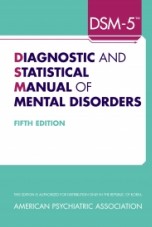도서 목차
상품 상세설명
차 례 Preface 0. Basic thermodynamic and biochemical concepts 0.1 Fundamental thermodynamic concepts States of matter Pressure Temperature Volume, mass, and number 0.2 Properties of gases The ideal gas laws Gas Mixtures 0.3 Kinetic energy of gases 0.4 Real Gases Liquifying gases for low temperature spectroscopy 0.5 Molecular Basis for Life Cell Membranes Amino acids Classification of amino acids by their side chains DNA and RNA 1. First law of thermodynamics Systems State Functions First law of thermodynamics 1.1 Research Direction: Drug design I Work Specific heat Internal energy for an ideal gas Enthalpy Dependence of specific heat on enthalpy Derivative box: State Functions described using partial derivatives Enthalpy changes of biochemical reactions 1.2 Research Direction: Global climate change 2. Second law of thermodynamics Entropy Entropy changes for reversible and irreversible processes The second law of thermodynamics Interpretation of entropy Third law of thermodynamics Gibbs energy Relationship between the Gibbs free energy and the equilibrium constant 2.1 Research Direction: Drug design II Gibbs free energy for an ideal gas Using the Gibbs free energy Carnot cycle and hybrid cars Derivative box: Entropy as a state function 2.2 Research Direction: Nitrogen fixation 3. Phase diagrams, mixtures and chemical potential Substances may exist in different phases Phase diagrams and transitions Chemical potential Properties of lipids described using the chemical potential 3.1 Research Direction: lipid rafts Determination of micelle formation using surface tension Mixtures Raoult's law Osmosis 3.2 Research Direction: Protein crystallization 4. Equilibria and reactions involving protons Gibbs free energy minimum Derivative box:Relationship between the Gibbs energy and equilibrium constant Response of the equilibrium constant to condition changes Acid-base equilibria Protonation states of amino acid residues Buffers Buffering in the cardiovascular system 4.1 Research Direction: Proton coupled electron transfer and pathways 5. Oxidation/reduction reactions and bioenergetics Oxidation/reduction reactions Electrochemical cells The Nernst Equation: Midpoint potentials Gibbs energy of formation and activity Ionic strength Adenosine triphosphate,ATP Chemiosmotic hypothesis 5.1 Research Direction: Respiratory chain 5.2 Research Direction: ATP synthase 6. Kinetics and enzymes The rate of a chemical reaction. Parallel first-order reactions Sequential first order reactions Second-order reactions The order of a reaction Reactions that approach equilibrium Activation energy 6.1 Research Direction: Electron transfer I: Energetics Derivative box Derivation of Marcus relationship Enzymes Enzymes lower the activation energy Enzyme mechanisms 6.2 Research Directions: Dynamics in enzyme mechanism Michaelis-Menten mechanism Lineweaver-Burk equation Enzyme activity 6.3 Research direction: The RNA world 7. The Boltzmann distribution and statistical thermodynamics Probability Boltzmann distribution Partition function Statistical thermodynamics 7.1 Research Direction: Protein folding and prions Prions 8. Quantum theory: Introduction and principles Classical concepts Experimental failures of classical physics Blackbody radiation Photoelectric effect Atomic spectra Principles of quantum theory Wave Particle Duality Schrodinger's Equation Born Interpretation General approach for solving Schrodinger's equation Interpretation of quantum mechanics Heisenberg Uncertainty Principle A quantum mechanical world 8.1 Research Direction: Schrodinger's cat 9. Particle in box and tunneling One-dimensional particle in the box Properties of the solutions Energy and wavefunction Symmetry Wavelength Probability Average or expectation value Transitions 9.1 Research Direction: Carotenoids Two-dimensional particle in a box Tunneling 9.2 Research Direction: Probing biological membranes 9.3 Research Direction: Electron transfer II: Distance dependence 10. Vibrational motion and infrared spectroscopy Simple Harmonic Oscillator: Classical theory Potential energy for the simple harmonic oscillator Simple Harmonic Oscillator: Quantum theory Derivative box: Solving Schrodinger's equation for the simple harmonic oscillator Properties of the wavefunctions Energy and wavefunction Forbidden region Transitions Vibrational Spectra 10.1Research Direction: Hydrogenase 11. Atomic structure: Hydrogen atom and Multi-electron atoms Schrodinger's equation for the hydrogen atom Derivative box: Solving Schrodinger's equation for the hydrogen Separation of variables Angular Solution Radial solution Properties of the general solution Angular Momentum Orbitals s-orbitals p-orbitals d-orbitals Transitions 11.1 Research Direction: Hydrogen economy Spin Derivative box:Relativistic equations Many electron atoms Empirical constants Self-consistent field theory (Hartree-Fock) Helium atom Spin-orbital coupling Periodic table 12. Chemical bonds and protein interactions Schrodingers' equation for the hydrogen molecule Valence bonds Huckel model Interactions in proteins Peptide bonds Steric effects Hydrogen bonds Electrostatic interactions Hydrophobic effects Secondary structure Determination of secondary structure using circular dichroism 12.1 Research Direction: Modeling protein structures 13. Electronic Transitions and optical spectroscopy The nature of light The Beer-Lambert law Measuring absorption Transitions Derivation box: Relationship between the Einstein coefficient Lasers Selection Rules Franck Condon Principle The Relationship Between Emission and Absorption Spectra The yield of fluorescence Fluorescence Resonance Energy Transfer: FRET Measuring fluorescence Phosphorescence 13.1 Research Direction: Probing Energy transfer using 2D optical spectroscopy 13.2 Research Direction: Single molecule spectroscopy Holliday junctions 14. X-ray diffraction and EXAFS Diffraction theory Bragg's Law Bravais lattices Protein crystals Diffraction from Crystals Derivative box: Phases of complex numbers Phase determination Molecular Replacement Isomorphous Replacement Anomalous Dispersion Model Building Experimental measurement of X-ray diffraction Examples of protein structures 14.1 Research Direction: Nitrogenase EXAFS 15. Magnetic resonance Nuclear magnetic resonance Chemical shifts Spin-spin interactions Pulse techniques Two dimensional NMR:Nuclear Overhauser effect NMR spectra of amino acids 15.1 Research Direction: Development of new NMR techniques 15.2 Research Direction: Spinal Muscular Atrophy Magnetic Resonance Imaging (MRI) Electron Spin Resonance Hyperfine structure Spin probes ENDOR 15.3 Research Direction: heme proteins 15.4 Research Direction: ribonucleotide reductase 16. Signal transduction Biochemical pathway for visual response Spectroscopic studies of rhodopsin Bacteriorhodopsin Structural studies Comparison of rhodopsins from different organisms Rhodopsin proteins in visual response 17. Membrane potentials, transporters, and channels Membrane potentials Energetics of transport across membranes Transporters Ion channels 18. Molecular imaging Green fluorescent protein,GFP Mechanism of chromophore formation FRET: fluorescence resonance energy transfer Imaging of GFP in cells Imaging in organisms Radioactive decay Positron emission tomography Parkinson's disease 19. Photosynthesis Energy transfer and light-harvesting complexes Electron transfer, bacterial reaction centers, and photosystem I Water oxidation
배송정보

주문하신 책과 다른 책이 잘못 배송되었거나 배송된 도서가 파본인 경우, 도서를 아래의 두가지 방법 중 하나를 선택하여 반송해 주시면 됩니다.
택배 또는 우편등기를 통한 반송 오발송이나 파본된 책에 대한 내용을 고객센터(033-745-8879)나 반품 및 교환 문의를 통해 알려 주시고,
오발송/파본 도서를 보내주시면 확인 후 택배 또는 우편으로 원래 주문하신 정상적인 책을 보내드립니다.
* 반송할 주소 : 강원도 원주시 판부면 매봉길 30-14 1층 의방서원
반송하실 때, 파본 도서의 경우 인쇄되지 않은 페이지나, 중복된 페이지, 찢어진 부분 등 구체적인 파본 부분을 포스트잇이나 메모지에 적어 표시해 주시면 감사하겠습니다.
또한 주문번호를 같이 기재해 주시면 주문자 확인 등에 소요되는 시간을 단축할 수 있어 환불이나 교환 등의 사후처리를 보다 빨리 할 수 있습니다.
물론, 반송비용과 재발송 비용은 본사에서 부담합니다.
책을 보내실 때 주문번호와 함께 환불해 드릴 계좌번호를 써서 보내주십시오.

의방서원 회원 약관 및 소비자 보호원 및 공정거래위원회 규정 표준 약관에 근거해 환불이 가능합니다.
하지만 다른 상품과 달리 도서는 상품 외형의 가치보다는 그 속에 담겨 있는 내용에 가치가 있는 것이기 때문에 반품가능 기간이 정해져 있습니다.
반품을 원하시는 도서는 받으신지 5일 이내에 등기우편을 통해 저희 회사로 보내주십시오.
단, 오발송이나 파본된 도서가 아닌 경우에는 배송 비용은 회원님께서 부담하셔야 합니다. 환불시 배송비용을 제외하고 난 후 송금해 드립니다.
이렇게 보내주신 책은 저희 반송 담당자의 확인을 거친 후 환불 처리되게 됩니다. 구체적인 반품 과정은 아래와 같습니다.
1. 전화 033-745-8879 연락 후
반품/교환 문의를 통해 반품하실 도서명을 저희에게 알려 주신 후 등기우편으로 보내주시면 됩니다.
2. 반품하실 주소는 위의 반송 주소와 동일합니다.
3. 보내실 때 반품 도서의 주문번호와 환불해 드릴 계좌번호를 메모지에 적어 함께 넣어주시기 바랍니다.
이러한 메모가 있는 경우에 보다 신속하게 반품 처리가 될 수 있습니다.
 즐겨찾기
즐겨찾기 고객센터
고객센터












